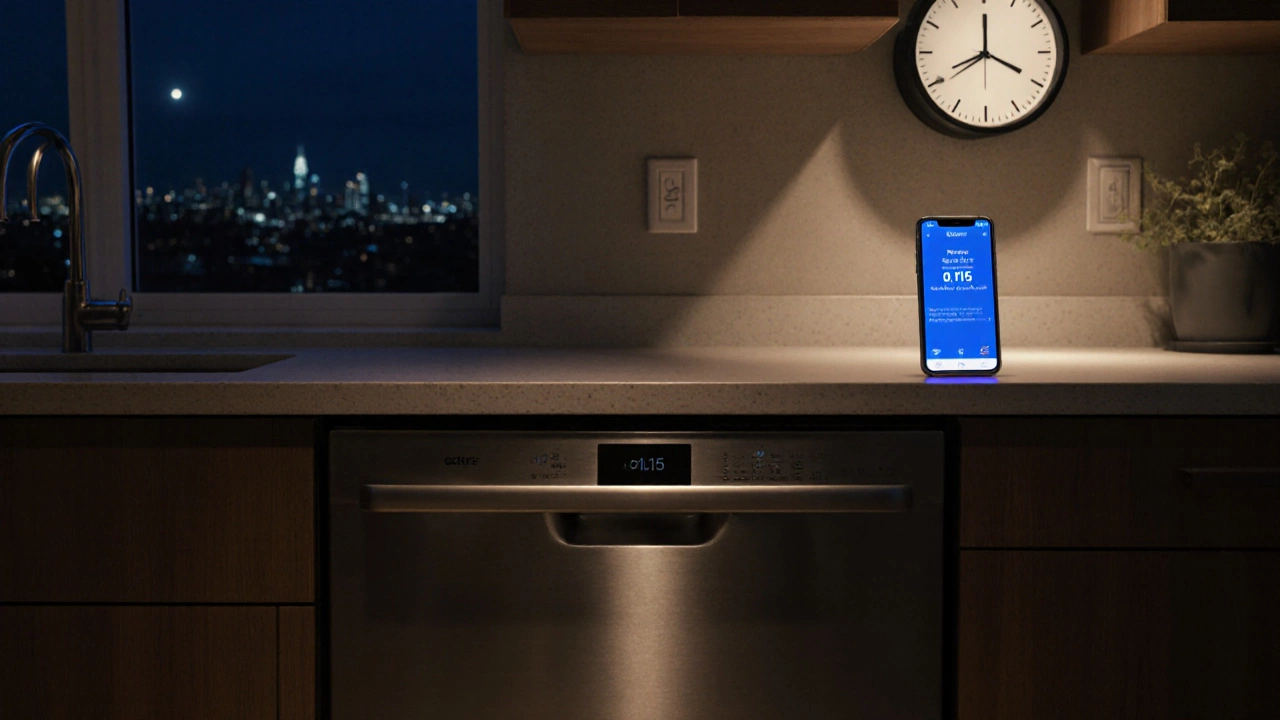When thinking about dishwasher night rates, the reduced electricity prices offered during off‑peak hours that make it cheaper to run your dishwasher at night, many homeowners overlook the easy wins. Also called off‑peak dishwasher pricing, these rates are part of time‑of‑use (TOU) tariffs, a system that charges different prices depending on the time of day. By syncing your dishwasher’s cycle with these cheaper periods, you can shave up to 30 % off the energy cost of each wash. Dishwasher night rates thus become a practical lever for anyone looking to trim household expenses without sacrificing clean dishes.
Off‑peak electricity, the lower‑cost power available during nighttime hours when overall demand drops is the cornerstone of night‑rate savings. In the UK, many energy suppliers offer a dual‑rate plan: a higher day rate and a reduced night rate that can be as much as 40 % cheaper. For a typical 12‑dishwasher load that uses about 1.5 kWh, the cost difference can be roughly £0.20 per wash versus £0.35 during peak hours. Multiply that by a family that runs the machine five times a week, and the annual savings climb to nearly £50. Those numbers aren’t just theory; they’re backed by real‑world billing data from households that switched to night‑rate plans in 2023.
Energy savings don’t stop at cheaper kilowatt‑hours. Running the dishwasher at night also eases load on the grid, which helps reduce carbon emissions. A study by the UK Department for Business, Energy & Industrial Strategy found that off‑peak operation can lower household CO₂ output by up to 8 % per year. That’s because power plants can run more efficiently when demand is spread out, cutting the need for peaker plants that burn more fossil fuel. So night rates deliver a double benefit: lower bills and a greener footprint.
To unlock these benefits, many smart homes now rely on smart dishwasher scheduling, automation tools that delay start times until the off‑peak window begins. Modern appliances often have a built‑in delay timer; you can simply load the machine, set the delay for, say, 2 am, and let it run on its own. If your dishwasher isn’t Wi‑Fi enabled, a smart plug connected to a home automation hub (like Home Assistant or Apple HomeKit) can trigger the power on at the right time. Some energy providers even offer APIs that let apps push a start signal when the night tariff kicks in. This integration means you don’t have to stay up late or manually calculate the best start time—technology does the work for you.
Before you jump in, check a few practical steps. First, verify that your energy supplier actually offers a night‑rate or TOU plan; not all tariffs are created equal. Look for plans that label the night window clearly (usually between 11 pm and 7 am). Next, adjust the dishwasher’s load size: a full load maximizes the energy you’re paying for, while partial loads waste potential savings. Use the eco or eco‑50 program if your model has one; these cycles are optimized for lower temperature washes, which consume less power. Finally, keep the appliance well‑maintained: cleaning the filter and running a monthly descaling cycle ensure it runs efficiently, preserving the savings you’ve earned from cheaper electricity.
Now that you understand how dishwasher night rates fit into off‑peak electricity, time‑of‑use tariffs, and smart scheduling, you’re ready to explore the deeper details. Below you’ll find a curated collection of articles that walk you through the why, how, and what‑if of running your dishwasher at night—covering everything from real‑world cost breakdowns to step‑by‑step guides for automating your cycle. Dive in to learn how to make the most of night‑rate plans and keep your kitchen humming while your energy bill shrinks.

Explore whether using a dishwasher at night actually cuts electricity costs. Learn about time‑of‑use rates, calculate savings, and get tips to maximize efficiency.